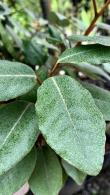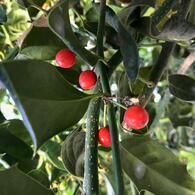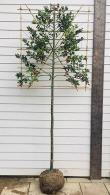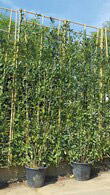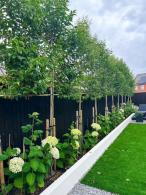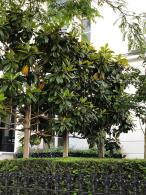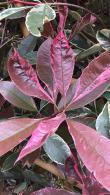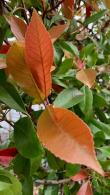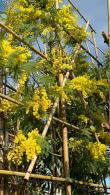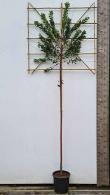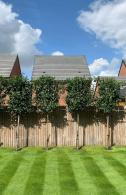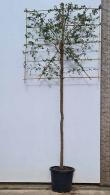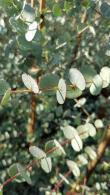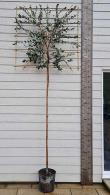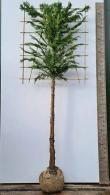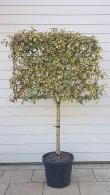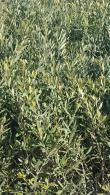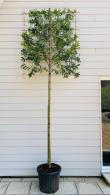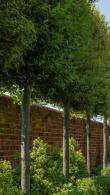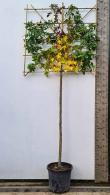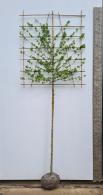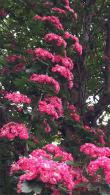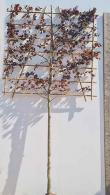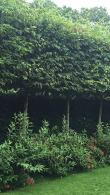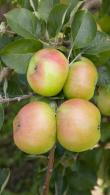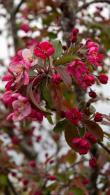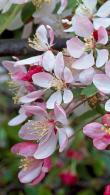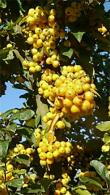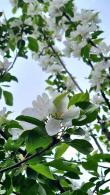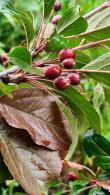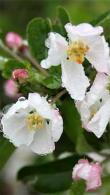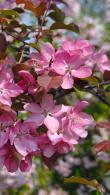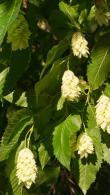Get Additional 5% Off 1st Order
Pleached Trees
Our Pleached Trees Collection
Many Varieties, Many Sizes of Pleached Trees
Pleached Trees have been used as an element in formal gardens for centuries. That said, this traditional landscaping technique remains highly relevant in today's modern contemporary gardens. The raised square crowns above straight bare trunks have a timeless appeal. The precise, architectural look of pleached trees can bring a distinctive look to your garden, small or large. In fact, people with smaller gardens very often opt for pleached trees as they tend to be more manageable size-wise as well as having more restricted root growth in line with the reduced crown size. So yes, pleached trees work brilliantly in smaller gardens—and equally, they’re a beautiful way to divide space in larger gardens, such as screening a dining area or separating off a swimming pool with natural elegance.
Fast Filtering & Easy Ordering
Finding the right pleached tree is simple with our online FILTER (located just above the tree listings below). Choose by overall height, trunk girth, or trunk height to find the best fit for your space. Each tree includes clear trunk heights, pot sizes, and up-to-date photos to guide your decision.
Real Garden Transformations
Pleached trees can have an instant visual impact—and many of our customers are amazed at how quickly they establish once they have planted in their gardens. For real-life before-and-after examples visit our Instagram @paramountplants to see how our pleached, ornamental, and screening trees have transformed our customer gardens of all shapes and sizes.
Many tree species can be adapted to pleaching, but they broadly fall into two categories: pleached evergreen trees and pleached deciduous trees. The classic deciduous choice is hornbeam. Our bestselling Pleached evergreen trees include Cherry Laurel and Photinia Red Robin Pleached and Magnolia Grandiflora. Browse our full collection below—just click on each photo to view prices, sizes, and images representative of every tree size available..
Pleached trees are especially trained on clear stems (like stilts) well above head height. The crown is generally cut and trained into a square shape. As the pleached tree matures, the crown develops into a striking cube shape. The exposed trunk allows views and /or movement through the clear stems beneath the crown. The difficult work of training and pruning the crowns of trees into a square shape, known as pleaching, will already have been accomplished when you buy your pleached trees from us. The branches will generally have been trained using bamboo training frames. Regular pruning is undertaken to create the straight lines necessary for this style. Once you have planted your pleached trees in your own garden, all you will need to do is trim them once or twice a year to maintain the form.
How Quickly Do Pleached Trees Fill Out?
Pleached trees are carefully trained by our team to grow both upward and across their frames, using bushy standard trees stretched and shaped to give you instant width and structure. As a result, they may not appear very dense at first—but fill out noticeably even within the first year after planting. With the right care and light pruning, the foliage gradually thickens to cover the entire frame, typically within 2 to 3 years. The training bamboo frames can remain in place long-term or be removed once the tree is strong and self-supporting. Tip: Don’t forget to loosen the rubber ties holding the branches in place once a year to give the branches room to grow and spread naturally.
A pleached hedge, sometimes referred to a stilted hedging or above fence screening, can be used on its own or in conjunction with a low traditional hedge or wall. It creates a sense of boundary without completely blocking off the enclosed space from its surroundings. Where there is an attractive stone or brick wall, a row of pleached trees will soften the upper edges and increase the height of privacy screening without hiding the wall. In a country setting, pleached trees lining either side of a formal pathway can create a stunning picture and provide structure for the rest of the planting.
Read our blog and our video on Pleached Tree Care - looking after your pleached trees.
Pleached Trees in Containers or Planters – Yes, It’s Possible
While planting in the ground is ideal, it’s not always possible—but that doesn’t mean you have to miss out on the benefits of pleached trees.. These elegant trees can thrive in raised beds or large, stable planters (cube shape pots best).
Read our blog on which varieties to choose when children and pets enjoy your garden space click here Buying Pleached Trees for family friendly gardens
Need Help Choosing?
Please feel free to email our friendly team at [email protected] for expert advice. To help us assist you, it’s useful to know the height of your fence (to match trunk height) and the length of the area you’d like to plant. We’re happy to provide a no-obligation estimate.
